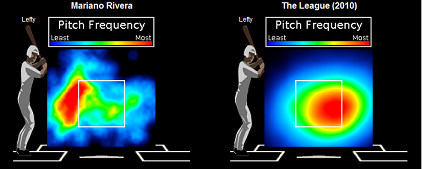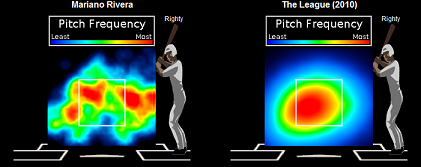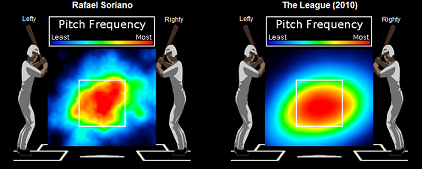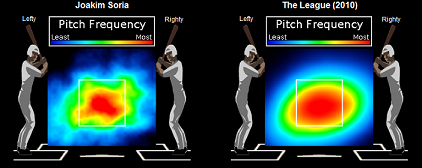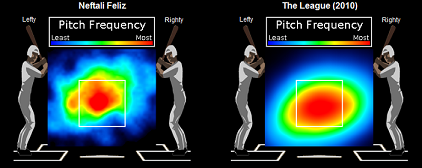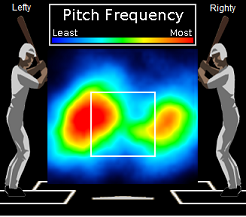Rangers Ink Nathan; Feliz to Start
 David Golebiewski |
David Golebiewski |  Tuesday, November 22, 2011 at 9:22AM
Tuesday, November 22, 2011 at 9:22AM
Texas Rangers signed RHP Joe Nathan to a two-year, $14.5 million contract with a $9 million club option for the 2014 season.
Turning 37 today, Nathan's days as a tier-one closer are likely over. But in his first post-Tommy John season, the longtime Twinkie pitched better than his ERA would suggest. Nathan gives the Rangers a capable late-inning arm without a leviathan three or four-year commitment and allows the club to make a reliever-to-starter conversion for a third straight season by moving Neftali Feliz to the rotation.
Nathan didn't get through the 2011 season unscathed (he missed a month with a right forearm injury), and his fastball, which once consistently sat 94-95 mph, averaged a more modest 92.3 mph. His lower-octane stuff led to his first relief year in which he struck out less than a batter per inning (8.7 K/9 in 44.2 frames). However, Nathan displayed pretty good control (2.4 unintentional BB/9) and his fielding-independent numbers paint the picture of a pitcher deserving of a 4.00ish ERA instead of his actual 4.84 mark, which was the result of a very low rate of stranding base runners (64 percent, compared to a 79 percent career average).
One concern for Nathan is how his fly ball-heavy approach will play in Arlington. Nathan induced ground balls slightly under 36 percent of the time in 2011, and he served up 1.4 homers per nine innings. Like in past years, he tried to challenge hitters up in the zone with his fastball:
Nathan's fastball location, 2011
But, sitting at 92 instead of his vintage 95 mph, Nathan's fastball got hit hard:
In-play slugging percentage by location on Nathan's fastball, 2011
All seven of the homers that Nathan surrendered came on fastballs. Hitters slugged nearly .600 against the pitch, and whiffed at it less than 13 percent of the time (18 percent average for relievers). Thankfully, his breaking pitches were more effective: batters slugged a combined .220 versus Nathan's low-80s curveball and high-80s slider (.302 average for RP).
Nathan's signing means the Rangers will try to go three-for-three in converting relievers to the rotation. C.J. Wilson (who Feliz may well replace) made the jump in 2010 and Alexi Ogando did it prior to 2011, and now Feliz gets his shot. The 23-year-old righty was a starter coming up on the farm with the Braves and has long been lauded for a devastating, mid-to-upper-90s fastball. As a starter, however, he'll need to show better control (he walked 4.2 per nine unintentionally last year), dust off his breaking ball and further develop either his high-80s cutter or changeup.
As a reliever in the majors, Feliz has averaged 96.3 mph with his fastball. Not surprisingly, he has fallen in love with that pitch, throwing it about 77 percent of the time. It's arguably the best fastball among all relievers. Even though hitters guessing fastball would have been right more than three-quarters of the time, they hit .181 against the pitch and slugged .291, while also whiffing 26 percent of the time that they dared take a cut.
That fastball, even if it loses a couple ticks in extended outings, will be the center piece of his approach. But his secondary stuff needs a tune-up. Feliz has thrown his power slider for a strike less than half of the time, and his changeup also has a below-average strike rate in the mid-fifties. As he develops those pitches more in Spring Training, he could also go to a high-80s cutter that he started throwing in 2011 (green on the chart below). That pitch would give hitters something more to think about instead of just gearing up for a fastball (red) or looking for a sweeping slider (blue).
Release velocity and pitch break on Feliz's pitches, 2011
Nathan no longer hangs out in Mo Rivera/Papelbon territory, and there are concerns about how his aerial approach applies to a park that increases homers by 19 percent for lefty hitters and 14 percent for righties. Still, if his signing keeps Texas from going 3 years/$30+ million for someone like Francisco Rodriguez or Heath Bell and lets Feliz maximize his value as a starter, it's a defensible move.


